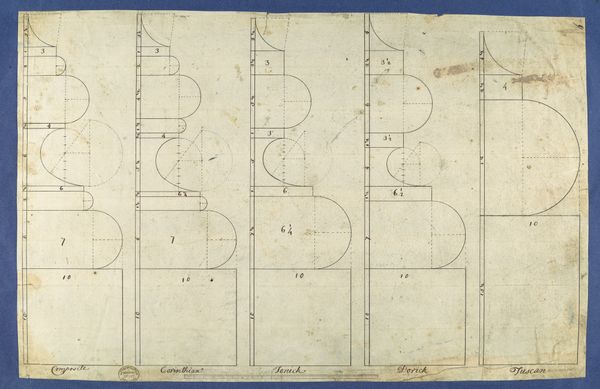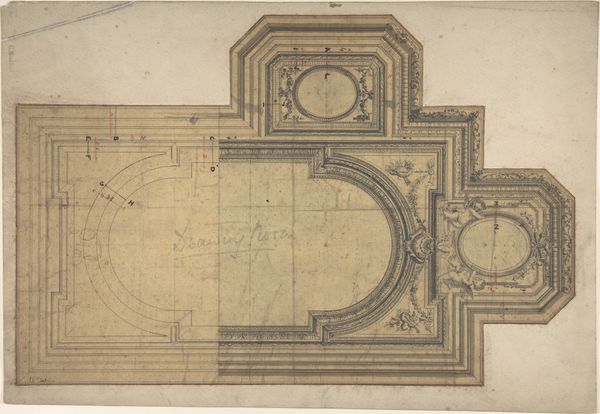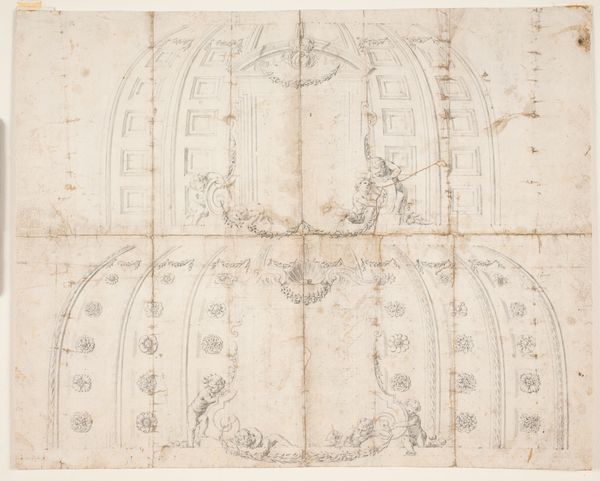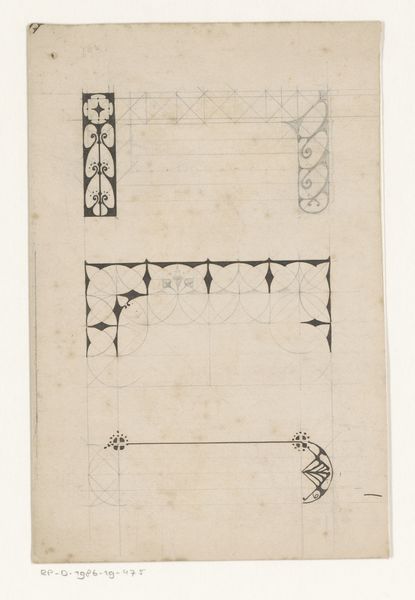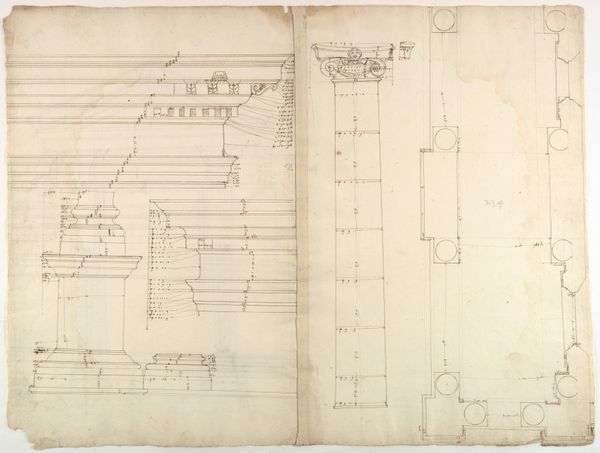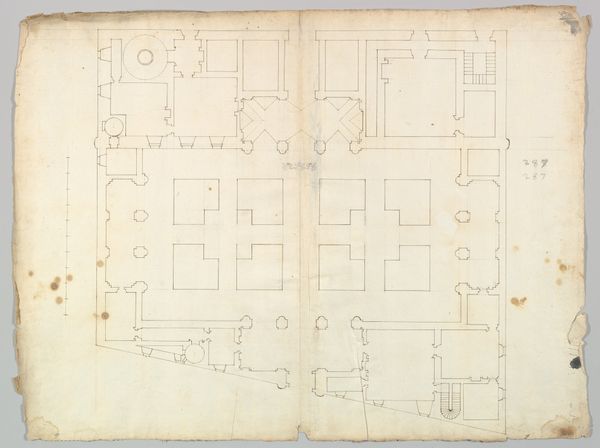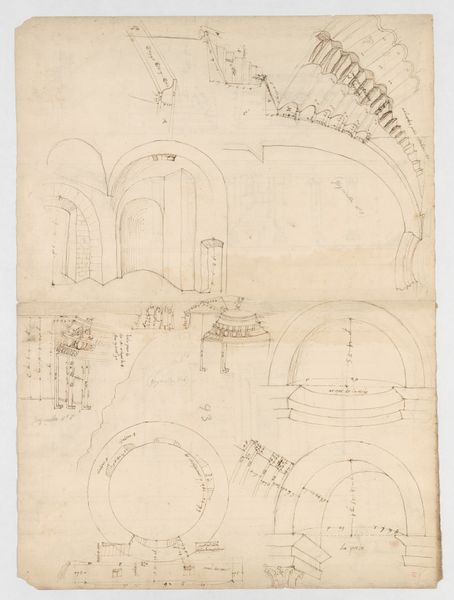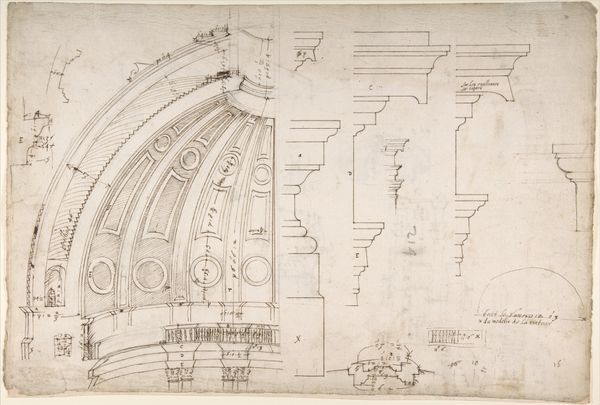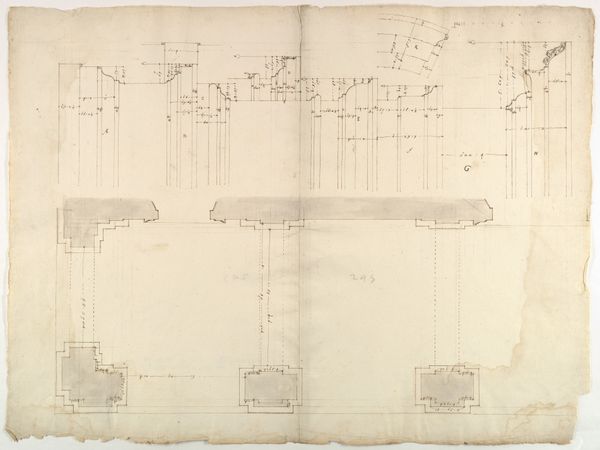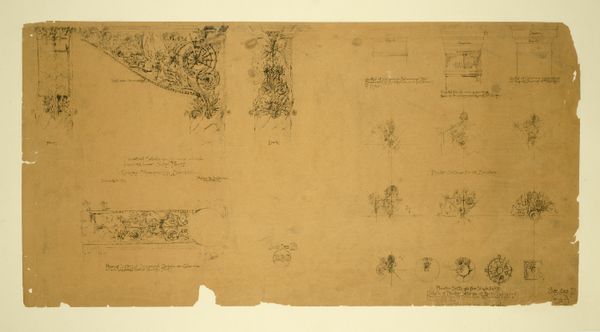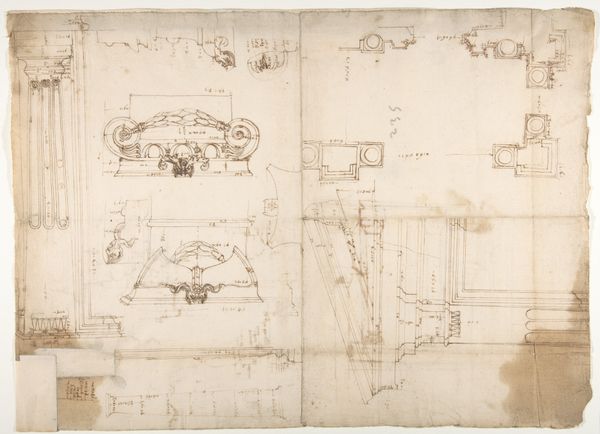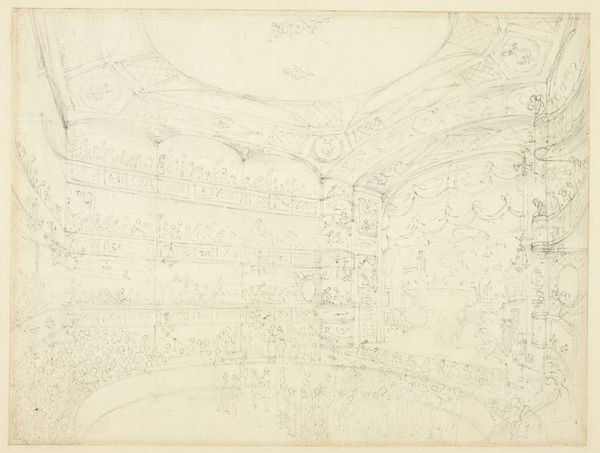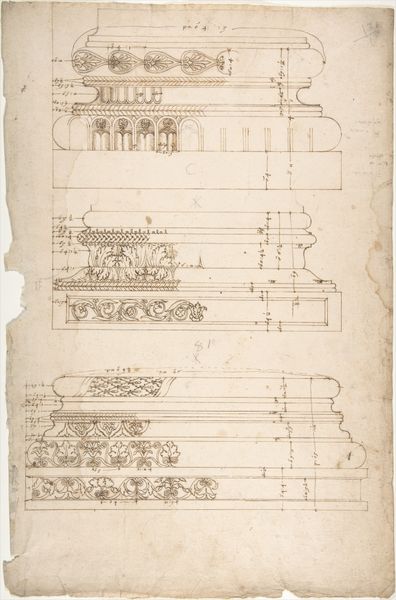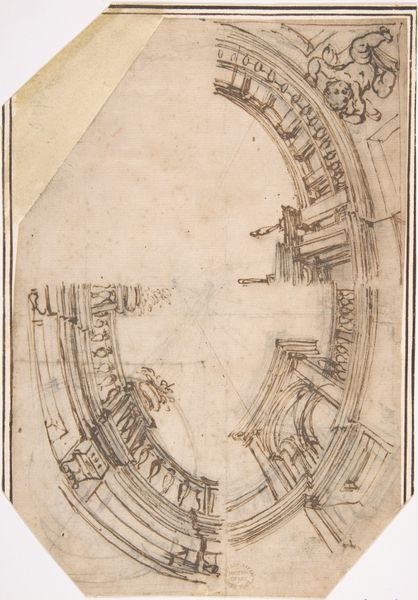
Studies for the Nave and Narthex of San Giovanni in Laterano, Rome (recto and verso) 1640 - 1660
0:00
0:00
drawing, architecture
#
drawing
#
baroque
#
geometric
#
line
#
architecture
Dimensions: Sheet: 11 x 8 1/8 in. (27.9 x 20.6 cm)
Copyright: Public Domain
Curator: Look at this fascinating sketch, "Studies for the Nave and Narthex of San Giovanni in Laterano, Rome." It's by Francesco Borromini, dating back to between 1640 and 1660. Editor: The precision here is compelling. My immediate thought is the laborious process to translate these lines to material form and how much labor each circle or cross section might contain. It looks deceptively simple, but... Curator: Exactly. It is more than lines! Borromini was a master of Baroque architecture, known for his dynamic forms and complex symbolism. This drawing, a ground plan, whispers volumes. The circle, so prominently displayed here, in the central apse and nave. Do you think of wholeness and divine perfection here, too? Editor: Of course, but how was it formed and transported and laid? That is where the devotion truly rests. The repetitive nature of these elements interests me - all those semi-circular forms placed uniformly along a baseline suggest standardization of component production. Did the process encourage a sort of divine belief too, perhaps? Curator: Intriguing thought. The visual language clearly intends more. Consider that San Giovanni in Laterano is the Cathedral of Rome, the seat of the Pope! Those lines, each carefully placed circle or square—they represent not just stone, but also the power and the glory of the Catholic Church. You sense a deliberate effort to convey this visually, echoing the aspirations and identity of the church itself through geometry. Editor: Well, that kind of intentional symbolism interests me much more when one sees the sweat on the masons' brow and considers the source of their pay! If the church provided for artisans or used oppressive systems of acquiring funds and materials, that speaks volumes too. What we are left with now are some abstract and symbolic images of their time and labor. Curator: Indeed. I appreciate seeing how you examine these lines and shapes as reflections of process and societal position in Borromini's drawing. Editor: And, it’s compelling to consider those circles and rectangles in terms of the grand narrative and religious iconography, and where people actually worked and lived at that moment in Rome.
Comments
No comments
Be the first to comment and join the conversation on the ultimate creative platform.
